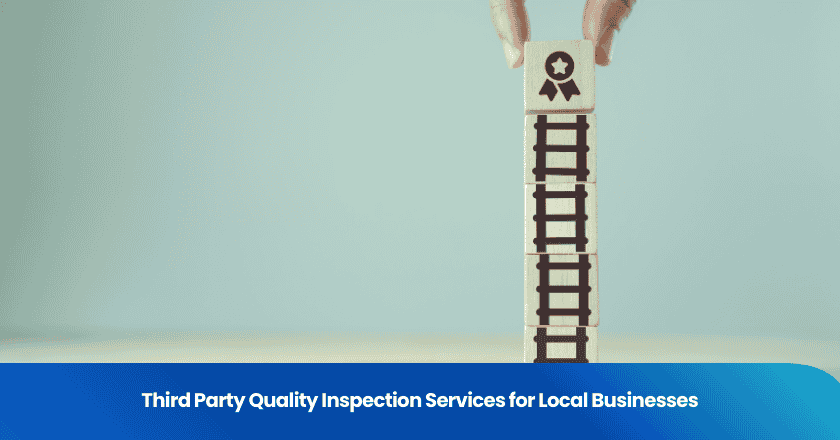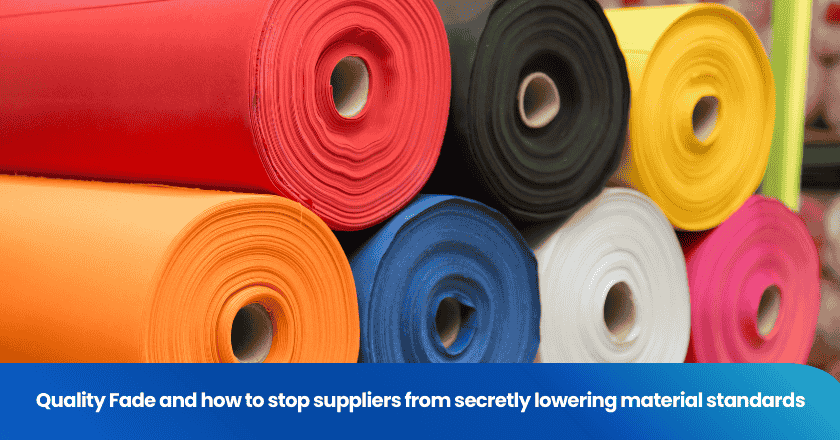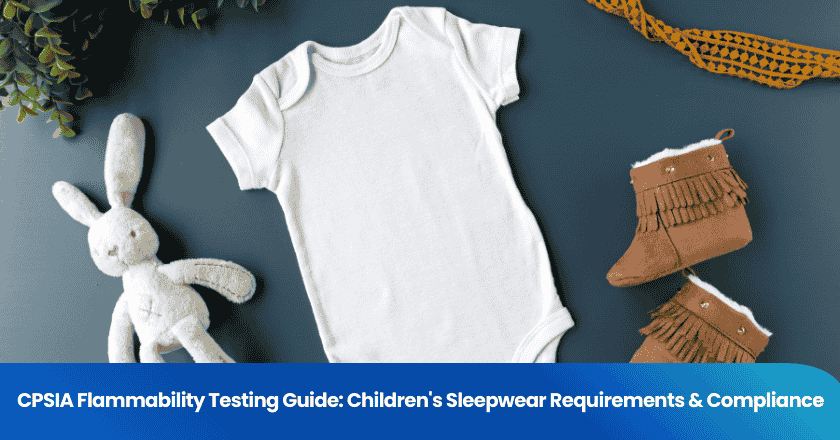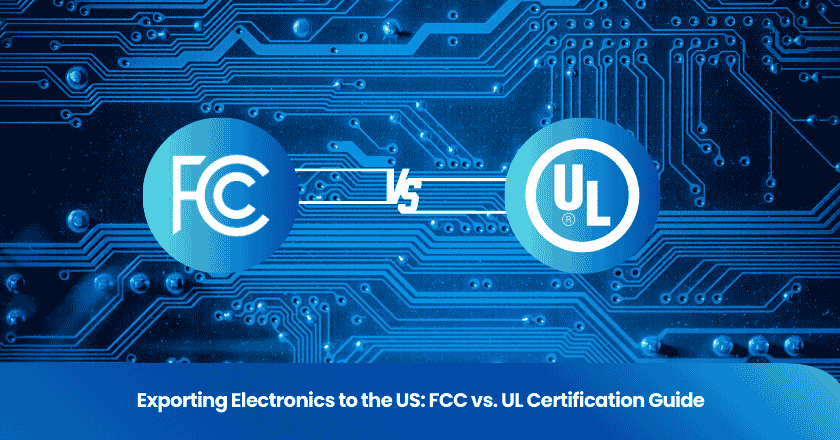
You rely on third party quality inspection services to ensure products meet strict standards before reaching your customers. Independent inspections help you identify problems early and maintain trust in your business. Common inspections include:
- Sample checking, which reviews selected items from a batch.
- Pre-production inspections, verifying raw materials.
- During production inspections, catching errors during manufacturing.
- Pre-shipment inspections, confirming finished goods meet requirements.
Key Takeaways
- Third-party quality inspections help identify product issues early, ensuring high standards and maintaining customer trust.
- Choosing the right type of inspection—like pre-production or pre-shipment—can significantly reduce risks and improve product quality.
- Regular inspections support compliance with industry standards, helping businesses avoid costly fines and enhance their market credibility.
- Investing in independent assessments leads to better quality control, timely reporting, and proactive problem-solving, ultimately saving money.
- Selecting a reliable inspection provider with relevant certifications and local presence can improve communication and operational efficiency.
What Are Third Party Quality Inspection Services
Independent Assessments
You benefit from independent assessments because they remove internal biases and conflicts of interest. Third party quality inspection services provide impartial evaluations that strengthen your quality assurance process. When you invite an external inspector, you gain credibility with clients and stakeholders. Objective reviews help you maintain high standards and meet regulatory requirements.
- Third-party inspections eliminate internal biases that may arise from familiarity or conflicts of interest.
- The involvement of an external party enhances the credibility of quality assurance processes, making results more trustworthy to clients and stakeholders.
- Independent inspectors provide objective evaluations, which are crucial for maintaining high quality and compliance standards.
You see improved product quality when you rely on independent assessments. For example, the Baldrige model demonstrates that organizations with external reviews achieve better quality management. Studies show that independent reviewers collect reliable data and minimize bias, which leads to more accurate results.
Tip: Relying on independent inspectors helps you identify issues early and maintain a strong reputation in your market.
Types of Inspections
You can choose from several types of inspections to fit your business needs. Each inspection targets a specific stage in your production or supply chain. Third party quality inspection services typically offer four main types:
1. First Article Inspection (FAI): You verify that all engineering, design, and specification requirements are understood and met before mass production begins.
2. Pre-Production Inspection (PPI): You assess the quality of raw materials or components before manufacturing starts.
3. During Production Inspection (DPI): You monitor product quality during the production cycle, using statistical sampling to catch issues early.
4. Pre-Shipment Inspection (PSI): You conduct a final random inspection before shipment to ensure finished goods meet your standards.
You may also use container loading supervision to guarantee safe transportation and delivery. The table below summarizes the purpose of each inspection type:
| Inspection Type | Purpose |
|---|---|
| Pre-Production Inspection (PPI) | Identify quality risks before manufacturing commences. |
| During Production Inspection (DPI) | Increase control of risks across your supply chain; involves statistical sampling procedures. |
| Pre-Shipment Inspection (PSI) | Avoid loss of business by identifying problems before shipment; uses statistical sampling. |
| Container Loading Supervision (CLS) | Ensure safe transportation and delivery in satisfactory condition. |
You gain more control over product quality and reduce risks by selecting the right inspection at each stage.
Compliance and Standards
You must comply with industry standards and regulations to operate successfully. Third party quality inspection services help you meet these requirements by providing impartial evaluations. These inspections identify areas for improvement and ensure you follow safety and quality benchmarks. Regular audits allow you to detect risks early, which can prevent costly fines or lawsuits.
By partnering with inspection agencies, you enhance your credibility in the market. This trust fosters accountability and helps you meet both local and international regulatory standards. The table below lists widely recognized compliance standards:
| Compliance Standard | Description |
|---|---|
| ISO Certifications | Globally recognized standards for quality and compliance across various industries. |
| CE Marking | Indicates compliance with EU safety, health, and environmental protection regulations. |
| FDA Certification | Ensures food, drugs, and medical devices meet U.S. safety and labeling standards. |
| USDA Certification | Confirms agricultural products are grown without synthetic pesticides or GMOs. |
| UL Certification | Ensures safety and reliability of electrical and electronic products. |
| HACCP Certification | Prevents food contamination and safety hazards in food production. |
You improve your business reputation and avoid regulatory issues by staying compliant. Third party quality inspection services support you in navigating complex regulations and maintaining high standards.
Benefits for Local Businesses
Quality Control
You want your products to meet the highest standards every time. Third party quality inspection services give you an extra layer of assurance by providing independent and impartial assessments. These experts evaluate your products during manufacturing, which helps you spot defects early and take corrective action before issues escalate. You receive timely reports, often within 24 hours, so you can make quick decisions and keep your production on track.
Here is a summary of how these services improve your quality control:
| Benefit of Third-Party Inspection Services | Description |
|---|---|
| Independent and Impartial Assessments | They provide unbiased evaluations of product quality during manufacturing. |
| Early Defect Identification | Helps in spotting defects early in the production process. |
| Compliance Assurance | Ensures that products meet specified quality standards. |
| Risk Mitigation | Protects businesses from potential losses due to poor quality. |
| Timely Reporting | Inspection reports are delivered within 24 hours, providing quick feedback. |
You gain confidence knowing that your products meet both your expectations and industry requirements. This approach reduces waste, saves money, and helps you deliver consistent quality to your customers.
Tip: Use third party quality inspection services to identify and fix problems before they reach your customers. This proactive approach strengthens your reputation for quality.
Risk Reduction
Managing risk is essential for any local business. You face challenges from suppliers, production errors, and changing regulations. Third party quality inspection services help you control these risks by conducting thorough inspections and compliance checks. You benefit from both remote and on-site assessments, which build transparency and ensure that your suppliers manage risks effectively.
Consider the following ways these services reduce risk:
| Service Type | Benefits |
|---|---|
| Expert Inspection Services | Reduces third-party supplier risk through thorough inspections and compliance checks. |
| Virtual Facility Tours | Audits operational infrastructure to ensure quality. |
| Incident Response Protocols | Tests response mechanisms to supply chain disruptions. |
| Third-party Audit Reports | Provides objective validation of supplier capabilities. |
- Conduct thorough remote and on-site inspections.
- Build transparency through detailed assessments.
- Ensure third parties manage risks effectively.
Independent inspections also help you comply with legal obligations and quality standards. You control quality, verify quantity, and meet regulatory requirements. This process significantly reduces risks in your supply chain and protects your business from costly disruptions.
Customer Trust
Your customers expect reliable, high-quality products. When you use third party quality inspection services, you show a commitment to transparency and quality management. This approach builds trust and satisfaction among your customers.
- Third-party inspection services enhance customer trust and satisfaction by ensuring high-quality products.
- They provide transparent quality management processes, demonstrating a commitment to product quality and consumer rights.
- This trust leads to increased customer satisfaction and loyalty, contributing to a positive brand reputation.
You also benefit from compliance with international standards, which boosts your credibility in the market. Products that meet these standards are more likely to gain recognition, both locally and internationally. Customers see your business as reliable and trustworthy, which encourages repeat business and positive word-of-mouth.
Note: Consistent quality and transparency are key drivers of customer loyalty. By investing in independent inspections, you strengthen your brand and build lasting relationships with your customers.
Inspection Process
Preparation
You set the stage for a successful inspection by preparing thoroughly. Start by developing clear expectations and creating a detailed quality control checklist. This checklist should include product specifications, safety standards, and functionality requirements. You then perform during-production inspections to catch mistakes early and avoid shipment delays. Treat quality inspection as a mandatory process. Specify in your purchase orders that shipments must pass inspection before release. Keep detailed records of inspection dates and results. Maintain a balanced approach with your suppliers. Foster accountability while building a cooperative relationship.
Key steps for preparation:
1. Define your quality expectations and compile a comprehensive checklist.
2. Schedule inspections during production to detect issues early.
3. Make inspection a non-negotiable part of your process and document every step.
4. Work closely with suppliers to ensure mutual understanding and responsibility.
Tip: A well-prepared inspection process reduces surprises and builds trust with your partners.
Execution
You carry out the inspection by following best practices that ensure accuracy and efficiency. Begin by specifying your expectations and product requirements. Use clear purchase orders and contractual terms to protect your interests. Hold your vendors accountable and perform product inspections at strategic points. Set clear defect tolerance levels and address any issues with your supplier immediately. Reinspect products after repairs to confirm that corrective actions work. Document your quality standards and create simple workflows to streamline the process. Maintain your inspection equipment to guarantee accurate results.
| Best Practice | Description |
|---|---|
| Specify Expectations and Product Requirements | Prevent misunderstandings and ensure thorough evaluations. |
| Purchase Orders and Contractual Terms | Define expectations for inspection services. |
| Keeping the Vendor Accountable | Ensure consistent service quality. |
| Perform Product Inspection | Maximize efficiency and compliance. |
| Define Quality Defect Tolerance | Guide inspection focus with clear standards. |
| Address Issues With Your Supplier | Maintain quality through proactive communication. |
| Reinspect to Confirm Repairs | Verify effective corrective actions. |
| Document Quality Standards | Guide inspection processes with clear statements. |
| Create Simple Inspection Workflows and Metrics | Improve efficiency with easy-to-follow steps. |
| Perform Preventive Maintenance of Equipment | Ensure accuracy through regular checks. |
Reporting
You receive a comprehensive inspection report after the process concludes. This report gives you a snapshot of the shipment’s status based on the inspector’s on-site examination. It includes documentation such as purchase orders, design materials, packaging materials, and quality control checklists. The report applies Acceptance Quality Limits (AQL) to determine if the shipment meets your standards. You see clear results: pass, fail, or pending. A pass means the product quality meets all requirements. A fail indicates too many defects or failed tests. Pending status shows the quality is close but needs attention.
| Component | Description |
|---|---|
| Inspection Results | Status of shipment based on on-site examination. |
| Documentation | Includes PO, design material, packaging, and QC checklists. |
| Acceptance Quality Limits (AQL) | Standards for quality based on defect findings from random sampling. |
| Pass | Product quality meets all requirements. |
| Fail | Defects exceed limits or important tests fail. |
| Pending | Quality is close to standards but needs further action. |
Note: Detailed reports help you make informed decisions and maintain high standards for every shipment.
Choosing a Provider
Selection Criteria
You want a reliable inspection provider who understands your industry and delivers consistent results. Start by evaluating their professional skills and experience. Look for a company with a proven track record in your product category. Review their historical performance and customer feedback to gauge service quality. Advanced technology and up-to-date equipment also play a key role in accurate inspections.
| Criteria | Description |
|---|---|
| Professional Skills and Experience | Verify the company has the necessary skills and experience for relevant inspections. |
| Historical Performance | Understand the company's past project experience and customer feedback to evaluate service quality. |
| Technological Capabilities | Ensure the company has advanced equipment and technology that meet inspection requirements. |
You should also consider these factors:
- Experience and expertise in your specific industry.
- Accreditations and certifications from recognized bodies.
- Clear communication and prompt, detailed reporting.
Tip: Choose a provider who offers transparent processes and keeps you informed at every stage.
Certifications
Certifications show that an inspection provider meets recognized standards. You should check for relevant certifications that match your business needs. These credentials demonstrate a commitment to quality, safety, and industry best practices.
| Certification | Purpose |
|---|---|
| ISO 9001 | Quality Management Systems |
| ISO 14001 | Environmental Management |
| ISO 45001 | Occupational Health and Safety |
| HACCP | Food Safety Management |
| GMP | Good Manufacturing Practices |
| FSSC 22000 | Food Safety System Certification |
You gain confidence when you see these certifications. They indicate that the provider follows strict guidelines and delivers reliable inspection results.
Local Relevance
Local providers offer unique advantages for your business. Proximity allows for quicker responses to urgent needs and reduces travel costs. You benefit from faster, clearer communication, which helps resolve issues efficiently.
| Benefit | Description |
|---|---|
| Quicker Responses | Local agencies can respond to urgent needs more rapidly due to proximity. |
| Reduced Travel Costs | Being local minimizes travel expenses for inspections, making the process more cost-effective. |
| Enhanced Communication | Proximity allows for faster and clearer communication, facilitating problem resolution. |
Local agencies also improve operational efficiency and help you maintain high standards. If your business requires frequent quality checks, choosing a local provider ensures you receive timely and effective support.
Cost and ROI
Pricing Models
You encounter several pricing models when selecting third-party quality inspection services. Each model offers flexibility based on your business needs and inspection frequency. The table below summarizes common options:
| Pricing Model | Cost Range |
|---|---|
| Daily billing model | $600-800/person/day |
| Hourly billing model | $100-500/hour |
| Per-order charges | $700-200 per order |
You choose a model that aligns with your budget and operational requirements. Daily and hourly rates suit ongoing projects, while per-order charges work well for occasional inspections.
Tip: Review your inspection schedule and volume to select the most cost-effective pricing model.
Cost Factors
Several factors influence the cost of third-party quality inspection services. Skilled personnel, advanced equipment, and specialized technologies drive operational expenses. You may face higher costs if your products require complex testing or if you operate across borders. Managing international regulations and language barriers can add to the expense, especially for smaller businesses. These elements shape your overall investment in quality assurance.
You benefit from understanding these cost drivers. By planning for skilled labor and technology needs, you avoid unexpected expenses and maintain control over your budget.
Evaluating ROI
You measure the return on investment (ROI) by comparing the net gain from inspection services to their cost. This calculation helps you assess the financial impact of your quality assurance efforts. You consider the costs of equipment, labor, and management, then evaluate the added value from improved product quality and reduced risks.
Utilizing Key Performance Indicators (KPIs) allows you to track product quality and supplier performance. A robust KPI system helps you make informed decisions and optimize inspection efficiency. You see long-term savings by preventing product returns, replacements, and additional shipping costs. Third-party inspections also minimize losses from negative customer experiences and post-shipment damages.
Note: Investing in third-party inspections leads to significant cost savings and enhanced profitability. You protect your reputation and build a foundation for sustainable growth.
Challenges and Solutions
Common Issues
You may encounter several challenges when you implement third party quality inspection services. These obstacles can affect your operations and impact your bottom line. Here are some of the most common issues:
- Cost: Inspection fees add extra expenses and can reduce your profit margins.
- Time Constraints: Delays often arise in procurement, especially when you work with international suppliers.
- Communication Challenges: Language barriers and cultural differences sometimes make it difficult to communicate effectively.
- Limited Control: You may feel that you lose some oversight over the inspection process.
- Dependency Risks: Relying too much on third-party services can create vulnerabilities in your supply chain.
Tip: Recognizing these challenges early helps you prepare and adapt your processes for smoother operations.
Overcoming Obstacles
You can address these challenges by adopting proven solutions that enhance your inspection process. Digital tools and transparent systems play a key role in overcoming obstacles.
- Increased transparency through digital records gives you a clear, auditable trail of inspections.
- Greater accuracy with digital tools reduces human errors and ensures reliable results.
- Scalability allows you to adapt inspection processes as your business grows.
You also benefit from the strengths of third-party inspectors:
1. Impartiality ensures unbiased assessments and fair evaluations of product quality.
2. Cost-effectiveness helps you identify problems early, reducing expenses in the long run.
3. Expertise brings highly trained professionals who deliver thorough and proficient inspections.
| Solution | Benefit |
|---|---|
| Digital Records | Clear audit trail and improved oversight |
| Advanced Tools | Accurate inspections and fewer errors |
| Scalable Systems | Easy adaptation for business growth |
| Independent Assessments | Fair and unbiased quality evaluations |
| Early Problem Detection | Lower costs and reduced disruptions |
| Skilled Inspectors | High proficiency and reliable results |
Note: By leveraging technology and expert support, you strengthen your quality assurance and minimize risks in your business.
You gain significant advantages when you invest in third party quality inspection services. Local businesses have improved market entry compliance, prevented crises, and reduced defect rates through regular inspections.
- Market entry compliance and crisis prevention help you build a strong reputation.
- Electronics and apparel companies have seen defect rates drop and customer satisfaction rise.
- ISO certifications boost credibility and support growth.
To prepare for inspections, clearly specify expectations, address supplier issues early, and understand your budget. Communicate about defects and request corrective actions.
Quality assurance drives your business forward. You build trust, reduce risk, and set the foundation for long-term success.
FAQ
What types of businesses benefit most from third party quality inspection services?
You benefit if you manufacture, import, or distribute products. These services help you maintain quality, meet regulations, and build customer trust. Small manufacturers, retailers, and food producers often see the greatest value.
How often should you schedule quality inspections?
You should schedule inspections at key production stages. Many businesses choose pre-production, during production, and pre-shipment checks. Regular inspections help you catch issues early and maintain consistent quality.
What documents do you need to prepare for an inspection?
You need product specifications, purchase orders, quality checklists, and relevant compliance certificates. Providing clear documentation helps inspectors understand your requirements and ensures a smooth process.
Can third party inspections help you meet international standards?
Yes. Third party inspections verify that your products comply with international standards like ISO, CE, or FDA. This support helps you enter new markets and avoid regulatory issues.
How quickly do you receive inspection reports?
You usually receive inspection reports within 24 hours after the inspection. Fast reporting lets you make timely decisions and keep your supply chain moving.
Grow your business with TradeAider Service
Click the button below to directly enter the TradeAider Service System. The simple steps from booking and payment to receiving reports are easy to operate.



